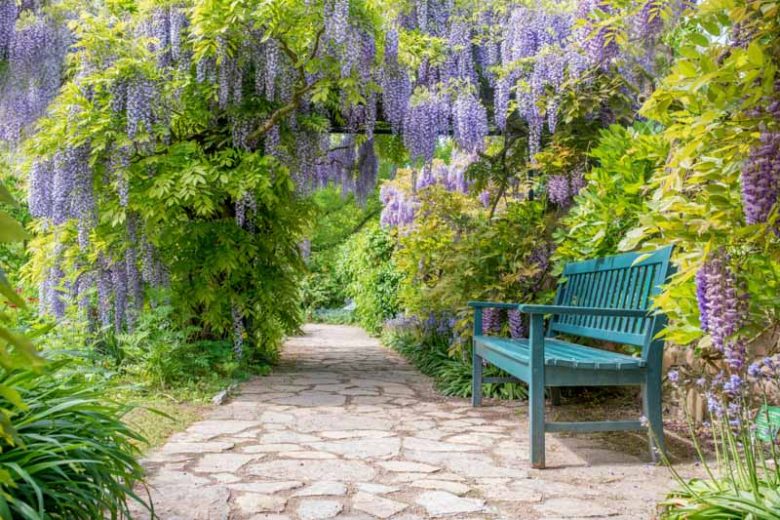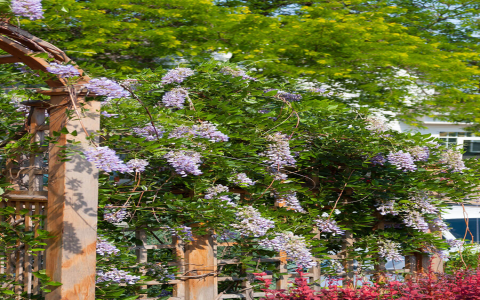Okay, let’s talk about wisteria and soil. I had this wisteria vine, see, and for a couple of seasons, it just wasn’t looking its best. The leaves were a bit yellowish, not that deep green you expect, and the flowers? Kind of pathetic, honestly. I was scratching my head, trying to figure out what was wrong. I water it, I prune it (mostly!), it gets decent sun. So, I started wondering about the dirt itself.
I remembered reading somewhere, maybe online or in a gardening magazine, that some plants are picky about their soil pH. Azaleas and rhododendrons, yeah, everyone knows they like it acidic. But wisteria? I wasn’t so sure. I saw some conflicting stuff when I looked it up real quick. Some said slightly acidic, some said they weren’t that fussy. Well, I figured the best way to know was to check my own soil.

Testing the Ground
So, I went down to the local garden center and picked up one of those simple soil pH test kits. You know, the kind with the little capsule and the color chart. Wasn’t expensive. I went back home, grabbed a trowel, and dug a small hole near the base of the wisteria, maybe six inches deep. Took a scoop of soil, making sure to get rid of any leaves or roots. Then I followed the instructions on the kit – mixed the soil with the powder from the capsule and some distilled water, shook it up, and let it settle.
After a few minutes, I compared the water color to the chart. Turns out, my soil was sitting around neutral, maybe even a tiny bit alkaline. Around 7.0 or maybe 7.2 on the scale. So, it wasn’t way off, but it definitely wasn’t acidic.
Trying to Make it More Acidic
I decided to try and nudge the pH down a bit, make it more acidic, just to see what happened. I didn’t want to go crazy with harsh chemicals right away. I started with some simple stuff I had around:
- Used coffee grounds: I drink a lot of coffee, so I started dumping my spent grounds around the base of the wisteria every morning.
- Pine needles: We have a pine tree nearby, so I raked up some fallen needles and spread them as mulch around the plant. I heard they can help acidify the soil as they break down.
I did this pretty consistently for a few months. Just adding the coffee grounds regularly and keeping a layer of pine needles around the base. I didn’t add huge amounts at once, just kept adding little bits over time.
Watching and Waiting
Then came the waiting game. Plants don’t change overnight, right? I kept an eye on the wisteria. For the first month or so, honestly, I didn’t see a massive difference. Maybe wishful thinking, but I thought the leaves might be getting a touch greener. It wasn’t dramatic.
But as the growing season went on, especially into the next spring, I definitely noticed a change. The new leaves coming out looked much healthier, a really nice deep green color. And the flowers! Oh man, the flowers were way better. More blooms, richer color. It just looked happier overall.
I tested the soil again later that year, just out of curiosity. It had dropped slightly, maybe closer to 6.5. So, not super acidic, but definitely leaning that way more than before.

So, Does Wisteria Like Acid Soil? My Take
Based on my own little experiment with my own plant in my own yard? Yeah, I’d say my wisteria definitely perked up when I made the soil slightly more acidic. It wasn’t wildly alkaline to begin with, but that little nudge seemed to make a difference for me.
Now, I’m not saying it’s the only thing that matters. You still need good sunlight, proper watering, and you absolutely have to keep up with pruning wisteria or it’ll take over your house! But for my plant, getting the soil pH down from neutral/slightly alkaline to slightly acidic seemed to be a piece of the puzzle. It responded well to the coffee grounds and pine needles. So, if your wisteria is looking a bit lackluster, checking the soil pH and maybe gently acidifying it might be worth a shot. Worked for me!





















